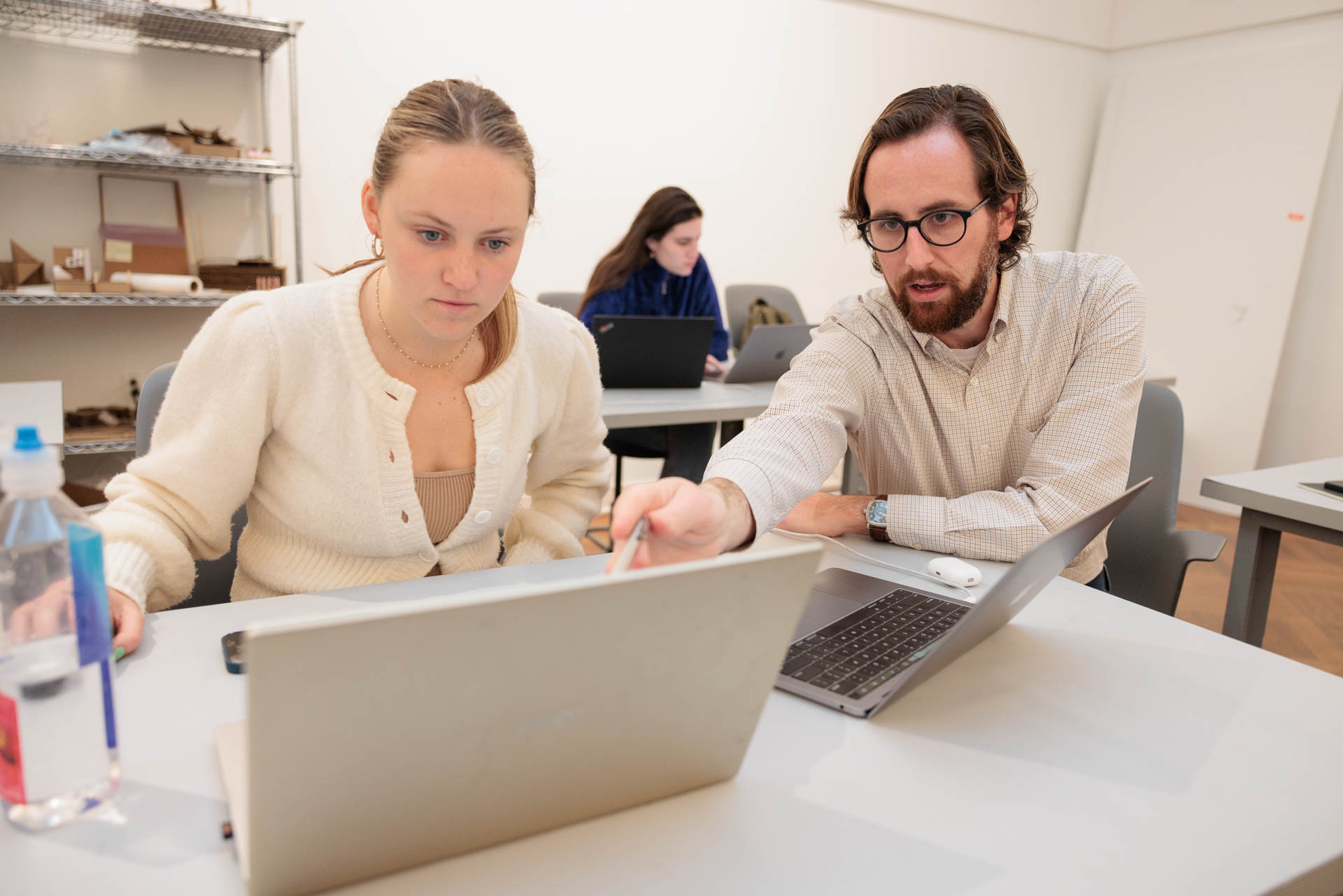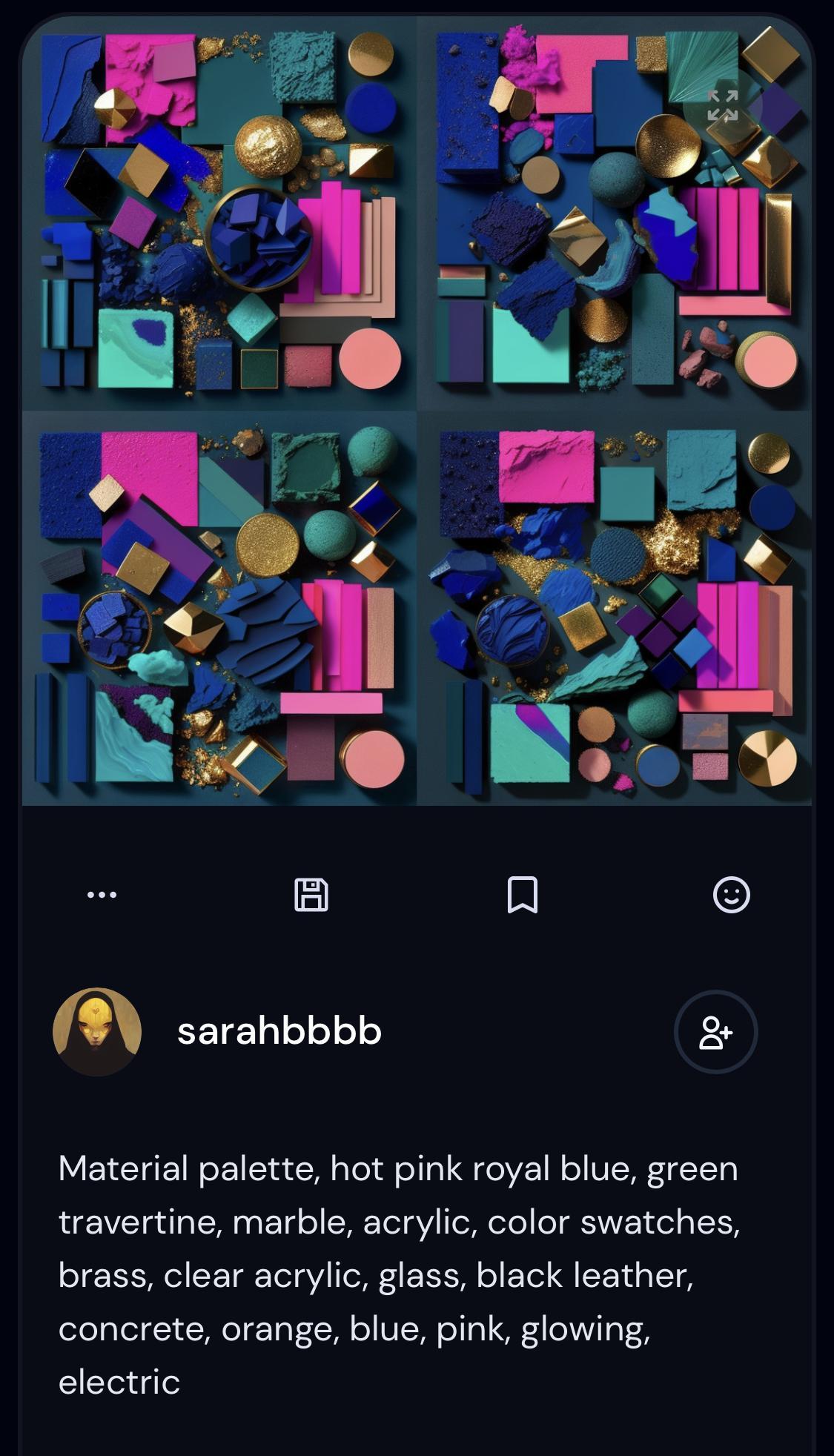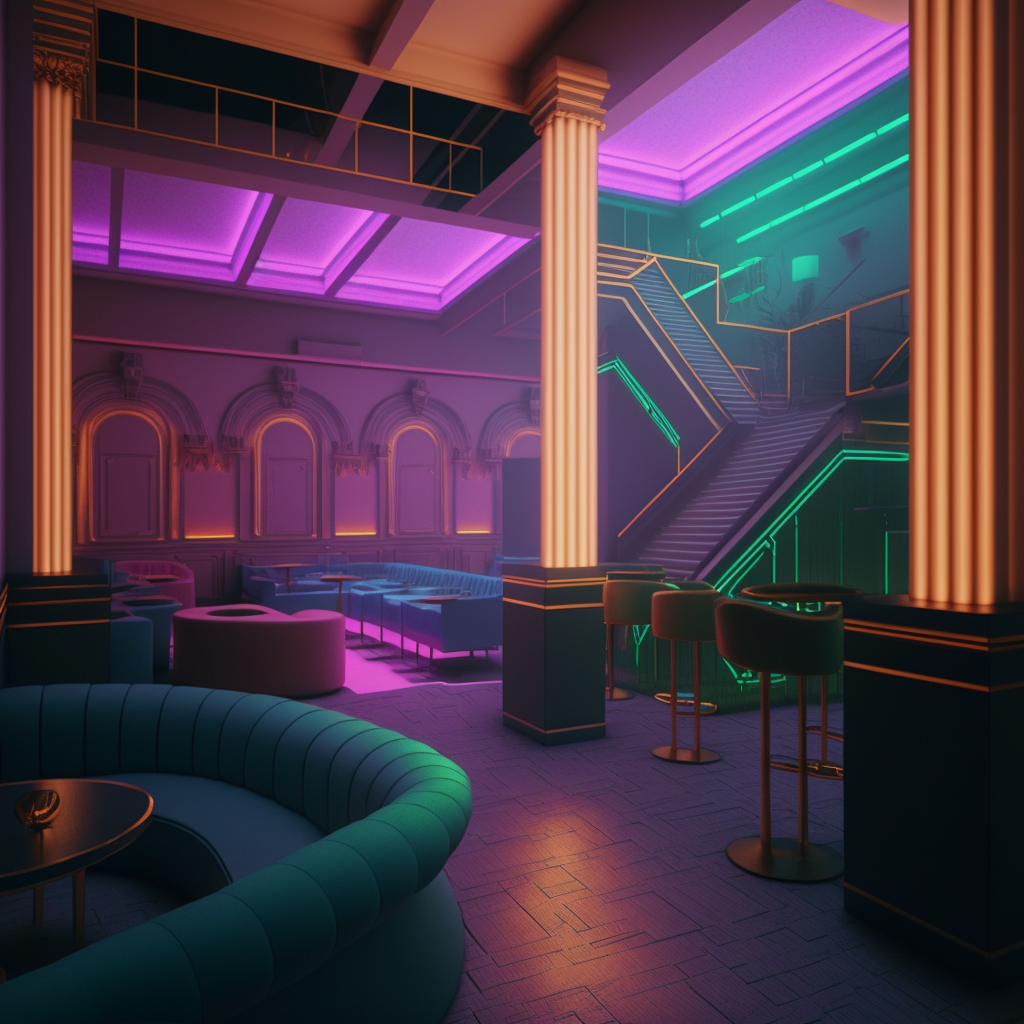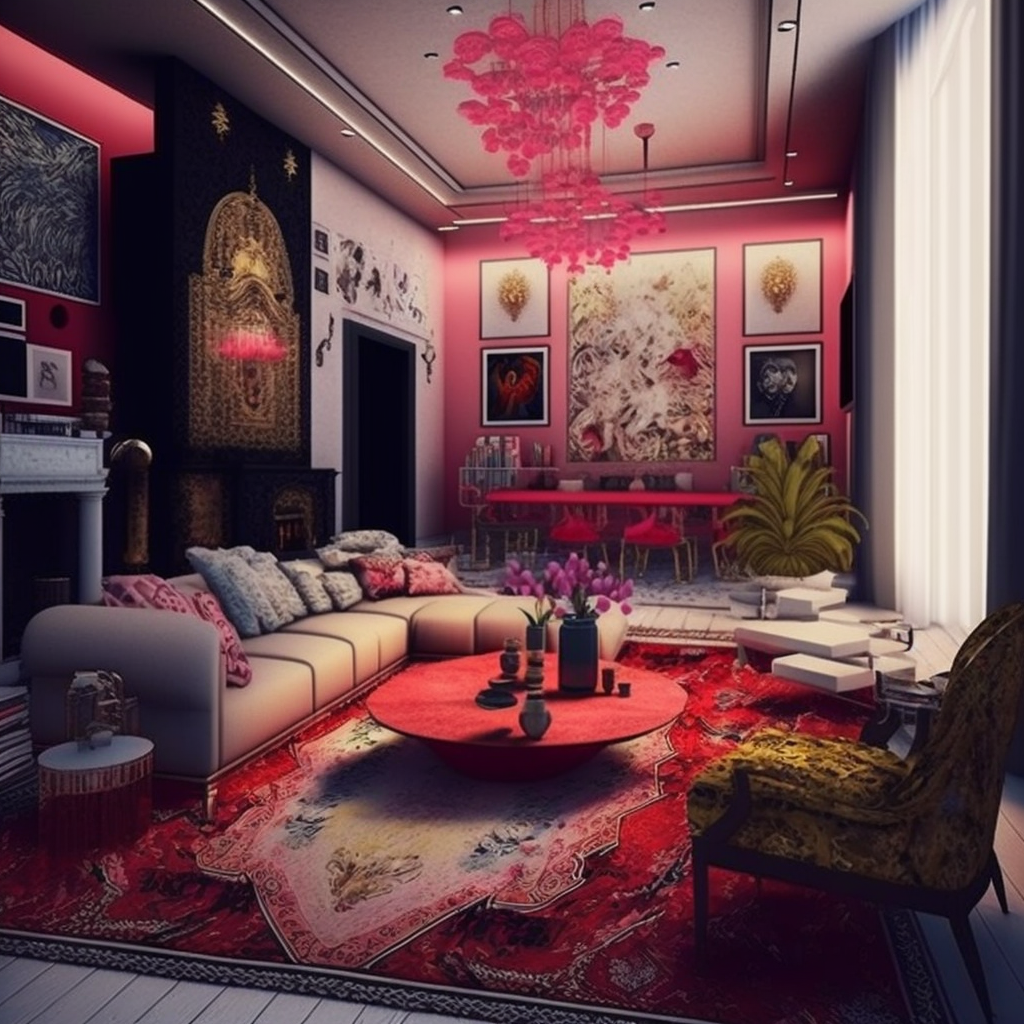Originally posted on GWToday by Greg Varner.
Some George Washington University faculty members discourage students from using artificial intelligence when doing coursework. Some would even categorize it as plagiarism. But Douglas Crawford, an assistant professor of interior architecture in the Columbian College of Arts and Sciences’ Corcoran School of the Arts and Design, is perfectly happy to have his students use a new AI tool called Midjourney.
He doesn’t require students to use the software, but Crawford encourages them to at least try it. He sees it as just another tool in a designer’s kit, though its use isn’t limited to architects and interior designers. And it’s much easier to learn than other graphic communication tools.
“It's basically a digital art creation platform,” Crawford said. To judge from what he sees online, he added, Midjourney has thus far been used mostly to create “cartoon characters and sort of wild, mystical things.”
But for interior architecture students, the platform can quickly create rendered floor plans, material palettes, perspective renderings and more. Crawford thinks the work his students are doing on the platform demonstrates that it is “not just a cute way to create a cool image. This is a really useful tool that can produce both academic and professional design content very quickly that would otherwise take a lot of work.”
Midjourney is readily accessible—free to use at first in a trial period, and then available for $8 monthly for a basic plan. Almost anyone can learn it in perhaps half an hour, Crawford said. In response to text prompts, the software produces four static images. Users can then select their favorite of the four and refine it in various ways. It is possible to choose an image and upscale it (have it produced at higher resolution).
“Anything you can describe with words, it can create an image of,” Crawford said. “If your prompt describes an L-shaped, 5,000 square-foot house in Arizona with one floor, and a kitchen next to a living room, it would produce it. And it will produce four variations of it. And then you can click on one and get four versions of that and just keep whittling it down until you get to something that is probably very close to what you have in mind.”
Images produced by Midjourney as common PNG files can be exported to other programs like Photoshop or Illustrator for editing and further work. Midjourney doesn't invalidate all the other tools the students are using, but its speed is “kind of incredible,” Crawford said.
A flurry of articles—pro and con—on the place of AI in education has turned into a blizzard in recent months as technology has developed more and more quickly. At GW, AI has been on the horizon for some time. In September 2021, GW’s School of Engineering and Applied Science was awarded $3 million from the National Science Foundation Research Traineeship program to emphasize the need for responsible and trustworthy AI.
After the launch in November 2022 of ChatGPT, a text-generating bot that produces various kinds of documents in response to prompts from users, a panel discussion attended by more than 200 people was held in January at Gelman Library. Various GW faculty members discussed their experience with AI, several saying that since students will be living in environments increasingly populated by AI, teaching them to responsibly use (or design) AI programs makes good sense. GW Provost Christopher A. Bracey said he would welcome additional dialogue as the technology evolves. The university plans to issue guidance soon regarding the use of AI in connection with graded coursework.
“Using AI has been criticized for just being sort of a cheat, or like it’s just producing the stuff for you,” Crawford said. “But when is it ever the case that the computer creates something, and it’s exactly what you need? You always need to make some sort of change or adjustment to make it more of your own.”
One of the students who have tried the new software, Sarah Butler, is using Midjourney for her senior capstone project in interior architecture for a cocktail bar and club set in Georgetown. She has used the platform to create material palettes, interior renderings, concept sketches and diagrams.
“The images I have been making would sometimes take weeks on end to create on my own, but with this software, I can get them in a matter of seconds,” Butler said. “You can never create the same image twice, which makes the process completely original and unique. The images are created based on the words you choose and nothing more, so the final result is ultimately coming directly from you.”
Midjourney is still new, Crawford emphasized. It was introduced only last fall and is evolving rapidly. And though no special language is necessary to write a prompt, you will obviously get better results if you know the specialized language of architecture and design.
“A lay person can get fairly far with this,” Crawford said. “But someone who is a designer by training, or a student who has gone through design courses, is going to have a better choice of words in that prompt to get a better result. You need to understand what it is you're looking for, and to have that sort of design sensibility to pick between these four and to craft that prompt.”
Crawford asks students to turn in the prompts they used together with the images produced so that they can discuss the wording and whether it could be edited to good effect.
The question of who is ultimately entitled to claim ownership of the prompts, he adds, is complicated.
“Since you're writing in something that's effectively like a chat room, anyone else can see it or use it,” Crawford said. “There are all sorts of open questions here and complexity to this.”
As AI technology develops, Crawford predicts that in just a matter of months, it will be creating whole 3D things, not just flat images.
“If your text prompt called for the design of a bespoke object, a future version of Midjourney might create a 3D model of it,” Crawford said. “And if you then pressed ‘send’ to a 3D printer, it would print it. This would be a huge leap forward, because right now creating something on a 3D printer requires the skill of being able to 3D model, which takes time to learn how to do. We’re definitely in the really early days of learning what Midjourney can be. I'm excited to see where this goes.”





